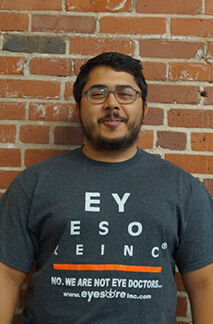When we talk to our clients, often times we’ll throw out the terms “frontend” or “backend” and they don’t know what the heck we’re talking about. We use this office jargon daily and almost forget that it’s nerd-talk and not normal-people-talk. So we thought, wouldn’t it be a great idea to explain a little on the situation? Yes. Yes it would.
There are three main categories of web-folks: “Frontend Web Developer”, “Frontend Web Designer”, and “Backend Web Developer”. Some people are a combination of the three and are considered “Full Stack Developers”, or “Full Stack Designers”.
So what is the difference?
It’s simple. Frontend works on the visual aspects of the site. Backend works on the parts of the site that no one will (well, shouldn’t…) see. They help the website communicate with the server and return information. Frontend takes that data and formats it in an appealing way.
Frontend Designers
They make things look nice. When we’re starting a new project, we’ll have a meeting with the client and take a look at their current site. This gives us an idea of what they like and do not like about their website and the amount of content that they will need on the new site. We’ll use this time to talk about any features they don’t have on their current site, but would be nice to have. This could be something as simple as an image slider or gallery, or it could be a complex eCommerce section with filters for prices and variations.
During the same meeting, we’ll also take time to look over examples of sites that they like and do not like (and why they don’t like them). This is a very important part of the process. It is much easier to find a site that displays content in a way that you like than it is to say “I would like a two column, modern layout with a parallax.” When the client shows us a site that they do not like, it gives us a better idea of design techniques and color schemes that they aren’t crazy about.
Once the Designer has the information she needs (‘she’ because, well, our designer is the only girl in the office), she’ll use a program like Adobe Photoshop or Illustrator to create a mockup (a flat, visual representation of the website). We’ll send that over to the client and see what they think. Usually, the response is something like: “I LOVE IT,” but we do get the occasional “A few things need to be changed/added” response. If that is the case, we’ll go through a few rounds of revisions to make sure that the client is happy and once the mockup has been approved by the client, it will be sent to the Frontend Developer for coding.
Meet the Frontend Designer:
Laura
“Stop, drop, shut ’em down down open up shop! Oh. No. That’s how Laura rolls.” The newest addition to the Eyesore crew as a frontend designer and developer, this entrepreneur with a successful photography business comes to us to begin a career in the digital realm, bringing a wealth of design expertise to the team.
Frontend Developers
After the mockup is approved, the layered version (not flat, every image is in a separate layer) of the mockup is sent to a Frontend Developer. We’ll then separate the layered version into individual images and use HTML and CSS to piece it together into a static-version of the website that your web-browser can open. Once we’re at that point, we’ll integrate the site into WordPress (a content management system) so the client is able to make changes to content on their own. Once the site is completed, we train the client on how to use and manage WordPress, and always remain a phone call away for any questions!
Meet the Frontend Developers:
Zach
With the roar of a mighty Scandinavian warrior, Zach develops websites and squashes bugs. Truly a man born on the Internet, Zach is a website owner’s best friend.
Juan
Buffoonery. If his daily demeanor had to be described with just one word, it’d be buffoonery. Behind the bad one-liners and puns is a front-end developer that enjoys a solid challenge and accomplishing the impossible.




